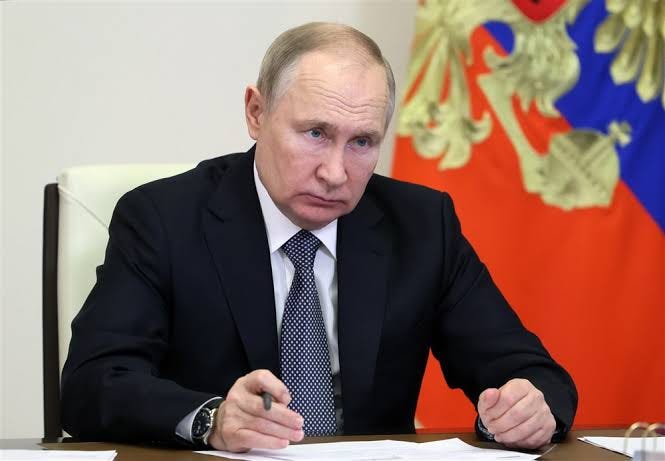Written by foreign policy graduate Percy Spender, find more of his content on 𝕏 @PercySpender
Donald Trump’s attempt to broker peace in the Ukraine war was bound to fail from the outset.
He vowed to drag Vladamir Putin and Volodymyr Zelenskyy to the negotiation table and achieve peace within 24 hours of his inauguration. Now just passing his third month in office there is no end to the war in sight; nor is there immediate reason for it to stop. The Trump administration has learnt that Putin will end the war on his time. Recently a series of miscalculations by the US administration have made apparent Washington’s severe misunderstanding of the motivations driving the parties involved in the war, this is most apparent in Russia’s case but Europe isn’t exactly feeling heard and understood. The most fundamental blunder was that Trump assumed that America can rely on sheer power to coerce Russia into a peace deal. Moreover, the narrow understanding of the conflict as being confined to the battlefield totally ignores the larger geopolitical security conundrum of which this war is only a symptom.
The NATO encroachment eastwards towards Russia and presence in Ukraine is the underlying reason for Russia invading Ukraine. Putin views NATO as an existential threat consisting of a coalition of Russia’s historic rivals; Germany, France, the United Kingdom, Turkey, and Poland. These powers were the main adversaries in Russia’s most consequential wars, joined by old Cold War adversary the United States of America. An unwavering term in any peace agreement Russia would agree to is NATO decoupling from Ukraine. This proves the foolishness present in recent negotiation developments, the European Union suggested the introduction of a peacekeeping force and the United States proposed a mineral deal with Ukraine. These decisions exemplify the chronic misunderstanding that has so far plagued attempts to broker peace. In short, Russia will be hesitant to agree to a peacekeeping force unless they in some part consist of non-NATO aligned forces.
More recently, Trump has recently approved the transfer of missile systems to Ukraine after initially hesitating on the sale of any military equipment to Ukraine when taking office. This is a classic case of Trump using brinkmanship as a geopolitical negotiation tactic, something I discussed in an article last year prior to his inauguration. From the Russian perspective, this is simply more weaponry that must be destroyed or removed from Ukraine before peace can be achieved. Further complicating matters is that though additional brinksmanship pressure will prolong the conflict, this is perhaps Trump’s only play.
Putin has been handed an incredible opportunity to use Trump’s pledge of ending the war to his advantage, by utilising slow and patient negotiations. This can play perfectly into Putin’s overall strategy of exhausting the West and eroding public support for Ukraine, making the war politically unpopular. With Trump’s patience and political capital starting to wear thin even among many of his loyal supporters, Russia’s consistent territorial gains are making the current peace deal the best Ukraine can get. The further erosion of Ukraine’s military capability will only result in Russia demanding further concessions.
The resolute firmness of Europe’s position must have also come as a surprise to the Trump admin. Since the outbreak of war, the EU has faced difficult economic hardship and a shift to more centralised governmental authority. If Russia secured a favourable agreement, then the narrative EU leaders have used to legitimise these developments will undermine that. The nature of a post-war Ukraine-Russia border remains a difficult question, in the case of third-party peacekeepers, which Europe in particular favours, they will have to control problematic extremist factions that exist within both the Ukrainian and Russian military. Both sides have infamous examples of poor discipline, disobedient commanders and rebellion in the case of Prigozhin and his Wagner forces. As for Ukraine, Azov battalions’ rejection of Zelenskyy’s commands in the years prior to the Russian invasion prove any peacekeeping force will have a difficult time controlling either side. If we observe the history of previous Minsk peace agreements, a pattern of chronic violations is unignorable. Neither the Trump administration, nor the EU, has yet offered solutions to this problem.
Honestly, my criticism of Trump requires acknowledging that he faces a truly impossible task. On one hand, engaging negotiations with Russia at the expense of the Ukraine alliance risks undermining US credibility and the alliance system in East Asia, which the Chinese containment strategy hinges entirely upon. Taiwan, Japan, South Korea and the Philippines will be observing Trump’s handling of Ukraine if he were to placate Russia for a hastily arranged peace. While on the other hand, the pursuit of a transactional resolution leaves Trump with few viable approaches. Trump has two directions he can head in to solve this near-insurmountable dilemma. Strengthening Ukraine and daring Russia to endure more military and economic strain in the hope they will be more willing to accept a peace deal; this would uphold the perception that the US will honour their alliances and affirms their leadership role in East Asia alliance structure. However, in this scenario the Russia-China axis will further entrench and will drastically complicate efforts to divide them. Conversely, appeasing Russia and damaging the confidence the East Asian allies have in US leadership risks pushing these key partners into China’s orbit. Either path carries profound trade-offs with no painless way forward.
Ultimately, the Trump administration’s handling of the negotiations reflects a deep malaise of American foreign policy thinking, as well as an inability to grasp the shift in geopolitics and the emerging multipolar system. This culture is deeply entrenched in the US administration and despite Trump’s genuine overtures to end the war, he may find significant internal and geopolitical obstacles once peace negotiations begin to develop.




